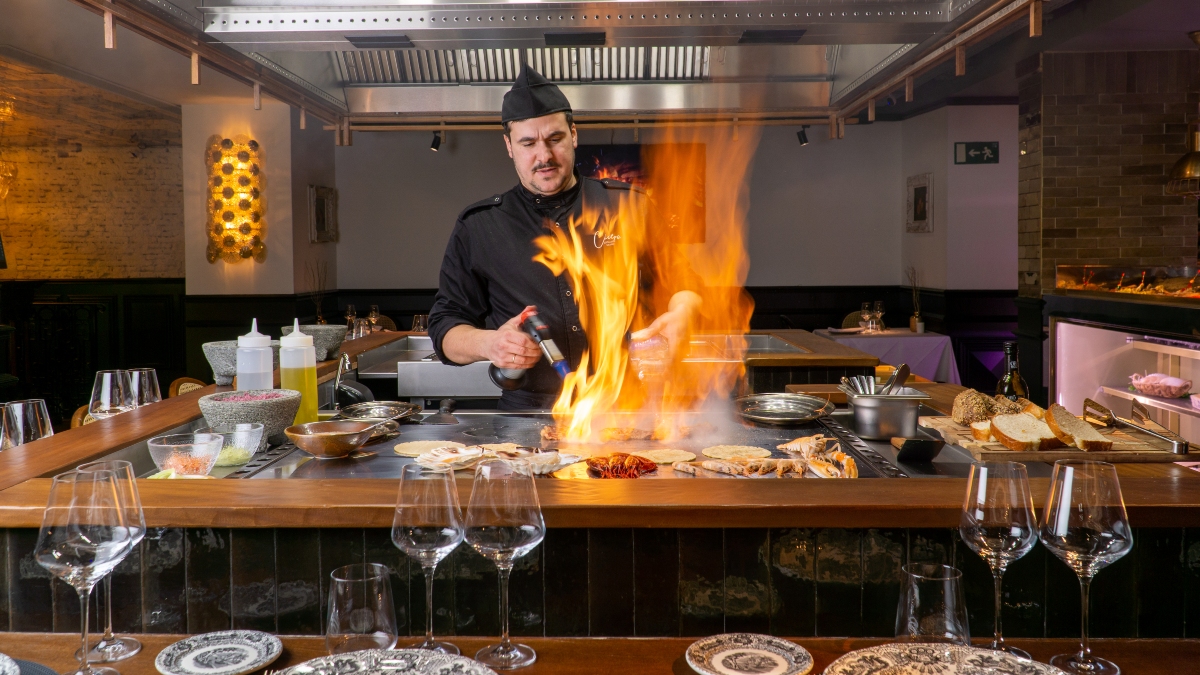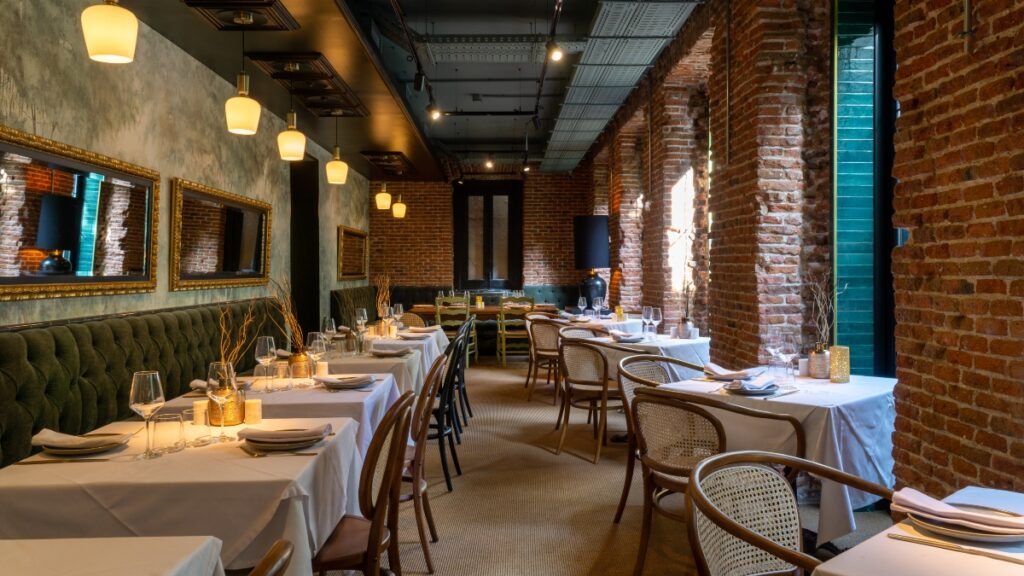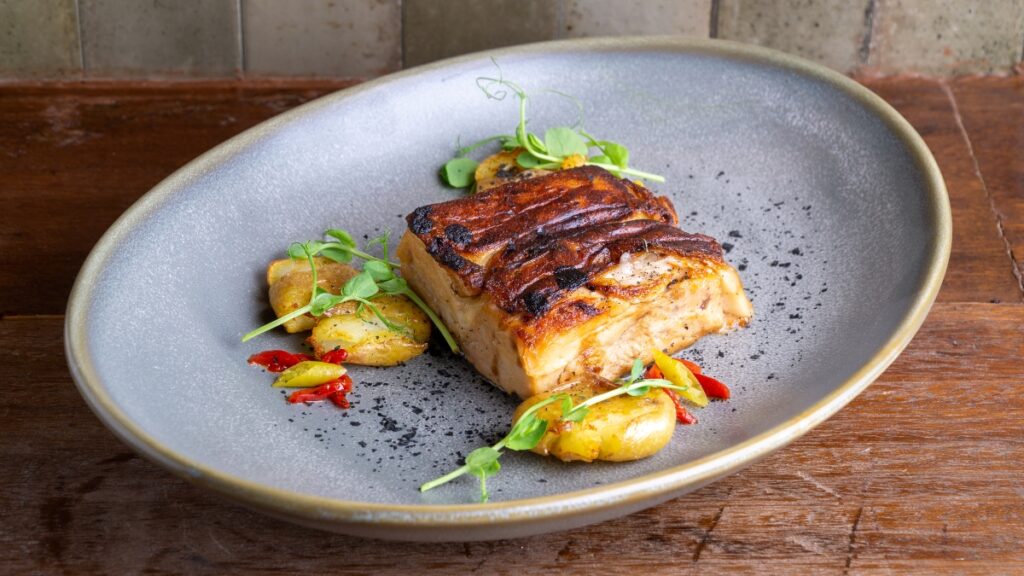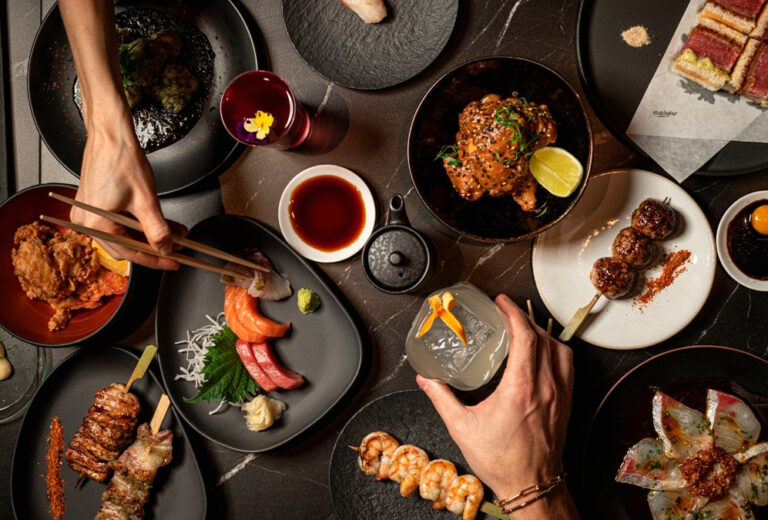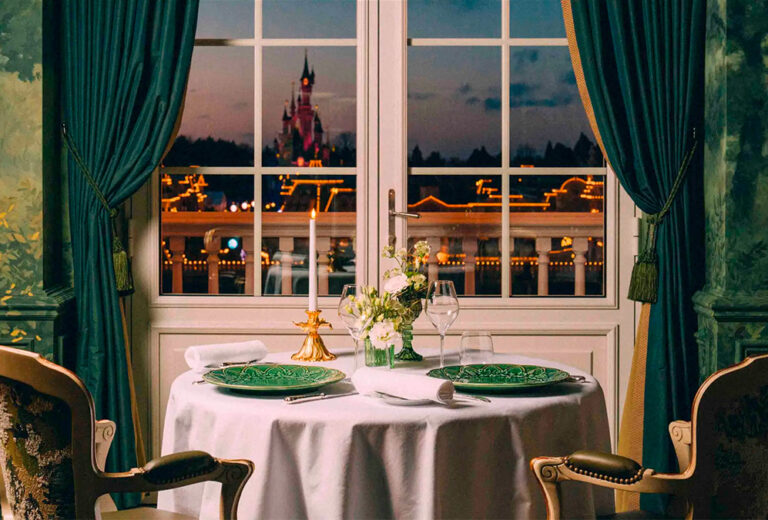Click here to read the Spanish version.
Pancho Cheschistz still remembers how happy he was in Madrid in the early 2000s, when he decided to open a Mexican restaurant called La Malquerida. And he also recognizes that, since then, he never forgot the Spanish capital, although shortly after that he had to return to his country to manage other businesses he had in Mexico City. Perhaps that is why today he is one of the four partners of Cícero, the new and elegant restaurant in the Salamanca neighborhood that is ready to become a reference point for any self-respecting gastronome.
“We love gastronomy and we are dedicated to it. And being in Madrid, for us, was knowing that we were coming to compete with the best in the world. To succeed here is to know that you can do it anywhere, because the capital of cuisine, right now, is the capital of Spain”, they explain. And hence the tenacity of these four Mexican friends: although in 2019 they were forced to postpone the launch of their future project due to the health crisis caused by the pandemic, in the end they managed to find what in their country is called a “garbanzo de libra”, that is, a perfect and exceptionally well-located locale to which they have already finished giving shape.
The result is Cícero, an enclave dedicated to embers and fire that has a first class pantry featuring select meats, fish and vegetables, and a professional but very warm service. In addition, to go a step further, they have installed a table (with built-in grill and own chef) that offers a communal experience for 18 people. All this, together with a carefully selected international menu and a pampered selection of wines, cocktails and Mexican drinks, will make this space the cicerone (the person who accompanies visitors to a place and explains what is most notable or interesting about it, something that the waiters take care of very kindly) for those who are looking for good food and careful attention.
Fire and national pantry
The oven, the grill and the griddle are the main threads of a cuisine devoted to fire and to sublimate the flavor of the selected raw material. The menu makes nods to Mexico, but does not offer dishes from the country “because we have neither the ingredients nor the staff to offer the excellence we are looking for”. Fish from the fish market, seasonal vegetables and meats from Discarlux star in a menu with a predilection for French recipes that will change at least twice a year.
Among the starters are the tasty dates with sobrasada and pancetta, one of the hits of the menu. Also the ensaladilla, with bluefin tuna and fried egg in lace, and the flatbread (unleavened bread that resembles pizza) of tuna and cherry tomatoes. Two salads are especially celebrated: the root salad, an original combination of carrot, parsnip, sweet potato and beet; and the Caesar salad with crayfish, a nod to Mexico, since the original version was created in Tijuana.
Different meats come out of its spacious (and hypnotizing) wood-fired oven. Among them, the suckling pig ingot, with its garnish of roasted potatoes, and the shoulder of suckling lamb, with a smoked touch, deserve special mention. On the grill, the baby squid, sautéed with caramelized onion juice and fried tentacles, and the sea bass with carrot textures occupy a place of honor. In the style of traditional steakhouses, different side dishes are offered, such as mashed potato with truffle, mushrooms with bacon and potato or roasted cauliflower with parmesan, and those that make a nod to the peninsula: the piquillo peppers confit in the wood oven could not be missing.
Among the desserts, there are three infallible recommendations. Chocolate fans cannot miss their version of the Rocher bonbon; the house cheesecake is a must; and, for those who want a sweet and not too cloying finishing touch, the strawberry and bergamot inspiration with mascarpone and pistachio mousse, light and sweet.
In the glass: wines, tequila and mezcals
The wine list has been prepared by Miguel Ángel Cooley, partner and president of the Mexican Sommeliers Association. And although in these first moments it has opted for a short proposal, the liquid list (which today is stocked with versatile wines that appeal to all kinds of audiences) will grow progressively.
The breadth of its menu of Mexican distillates stands out, however. In the tequila chapter, the main branches of the great Mexican houses appear: José Cuervo (Pancho Cheschistz has an intense relationship with the brand), Don Julio and 1800 (drinks cost a maximum of 35 euros); while mezcals are represented by the most emblematic labels, such as 7 Misterios, 400 Conejos, Alipus and Montelobos (from 14 to 16 euros per drink).
There is also a good selection of classic cocktails, with a Mexican twist: no shortage of Margaritas, Palomas, micheladas and clamatos. The eagerness for Cicero to be a place of magnificent hosts is seen in the small details. At the end of each meal a Mexican carajillo, a mixture of coffee, liquor 43 and chocolate and marzipan, is offered. And although the kitchen does close, the place stays open in the evenings, making it the ideal place for afterwork -it also has a generous offer of distillates- and some dishes are available.
Cícero Table: the place to see, be seen and enjoy a good meal
Something that sets Cícero apart, and promises to become one of its most celebrated attractions, is its Cícero Table, a communal table for 18 diners (with a minimum of two for it to be operational) around which a plancha has been installed and at which a private chef cooks and dialogues with customers. It is available for one shift for lunches, at 2:00 pm, and two for dinners, at 8:15 pm and 10:00 pm. Three menus are currently on offer: one of four courses, for 50 euros; another of five, for 70 euros, and one of six (and a particularly select raw material), for 90 euros. It is possible to complete them with a pairing with four glasses of wine and three different prices depending on the exclusivity of the labels -25, 45 and 60 euros-.
The dishes that make up this menu are those of the menu, with the exception of the tacos, an exclusive snack linked to Mexican tradition: there are fish, rib eye in a fine cut or shrimp. They are made in the traditional Mexican trompo, a kind of kebab very popular in the country. As Pancho explains, “you can reserve the whole table, but the idea is that this is a kind of omakase in our style, a place where you can enjoy the meal with your companion or open up to the rest of the diners. There is no table like this in any bourgeois dining room in the capital”. In addition, chefs will be invited periodically to guesting sessions, as well as winemakers and producers who share the gourmet soul of the restaurant.
A place to feel at home… or in the kitchen
Luis Felipe Castro, one of the four partners, has been responsible for the interior design of Cícero. Currently, there are three operational spaces: the dining room, overlooking a cheerful urban garden; the entrance, where the Cícero Table is located; and the kitchen itself. To configure the latter two, Castro and his team have used materials that evoke the atmosphere of a kitchen, such as tiles, wood and stainless steel, but always seeking a warm and very welcoming environment.
The dining room and the tables at the entrance take us, as he himself explains, “to a house, we wanted to avoid current trends to configure a timeless space, typical of a home, with cream and beige tones, exposed brick and we have tried to preserve some original elements of the premises, such as window frames. The lighting changes a lot from day to night: in the morning, the light from the garden windows illuminates the dining room; when the sun goes down, we look for something more theatrical and intimate,” he says. Wow, an experience of ten.

